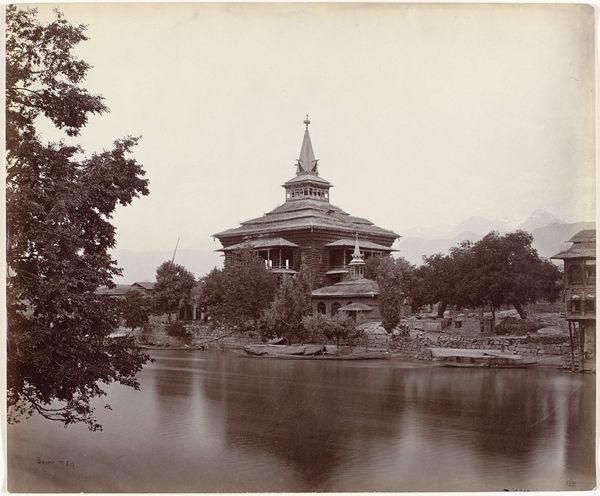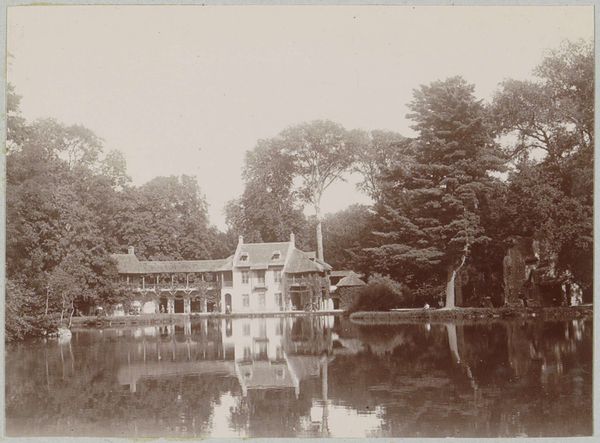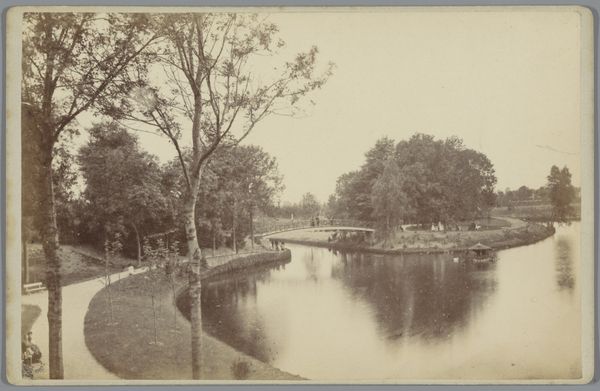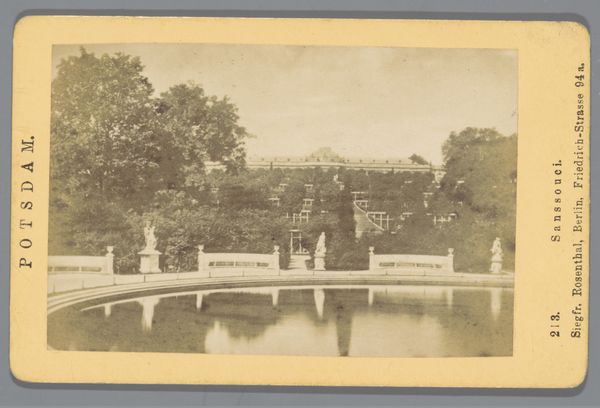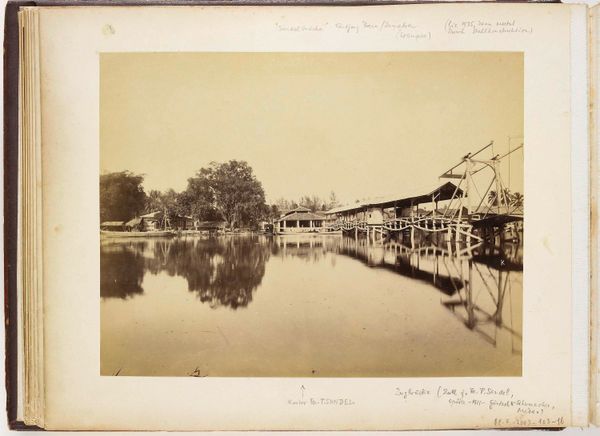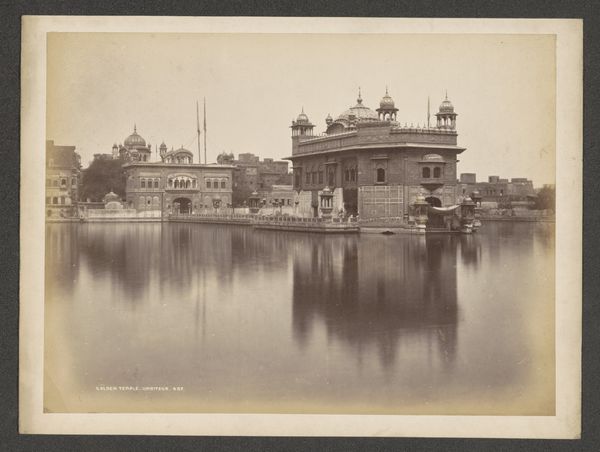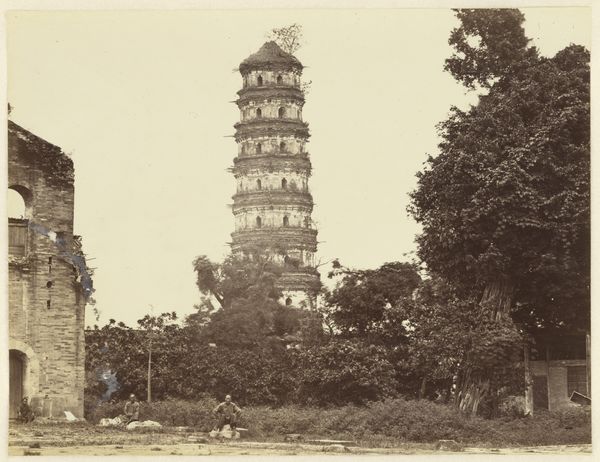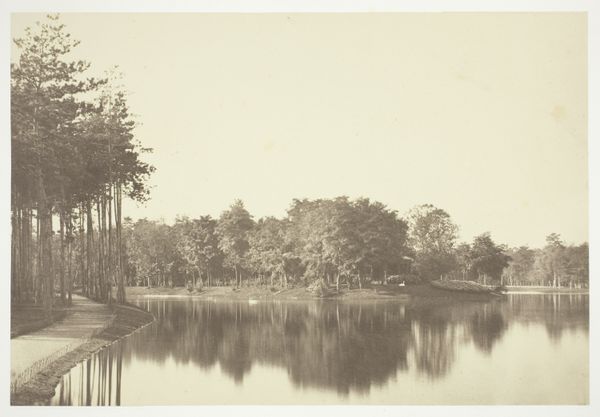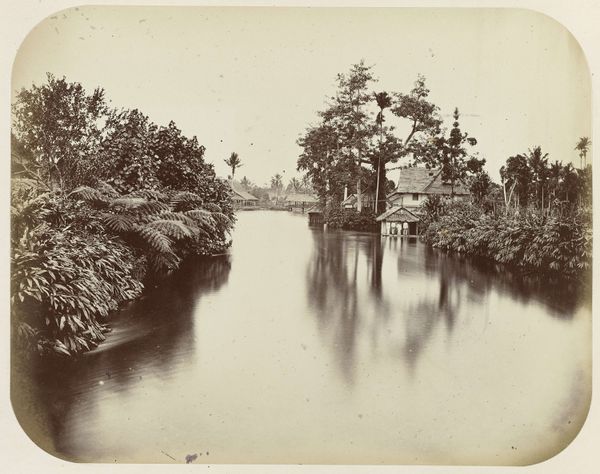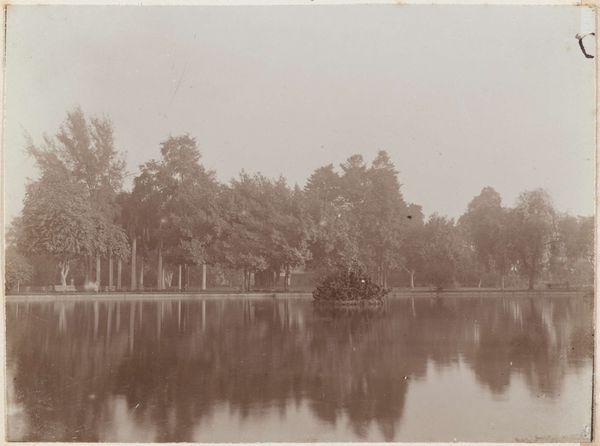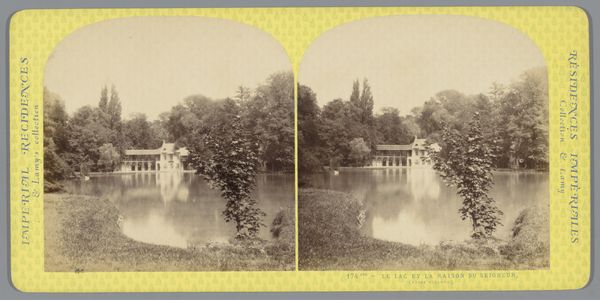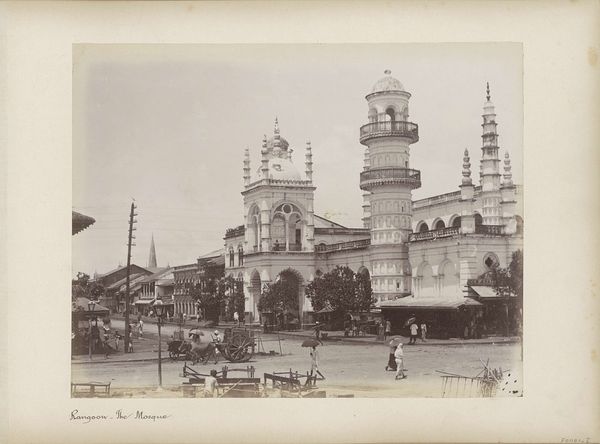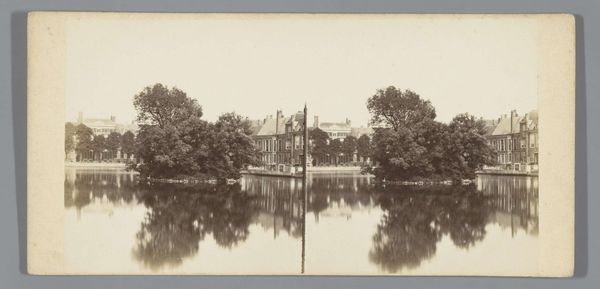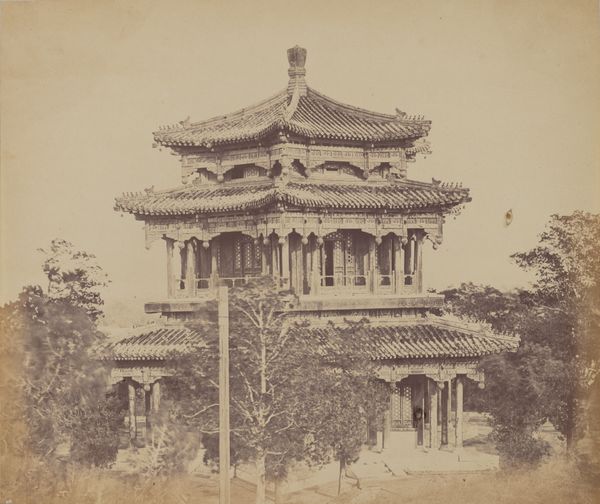
photography
#
asian-art
#
landscape
#
photography
#
orientalism
Dimensions: height 227 mm, width 292 mm, height 248 mm, width 311 mm
Copyright: Rijks Museum: Open Domain
This photograph of Gurdwara Baba Atal te Amritsar was taken by Samuel Bourne, a British photographer active in India in the late 19th century. Bourne was known for using the collodion process, a labor-intensive technique requiring portable darkrooms for on-site development. The process involved coating a glass plate with light-sensitive chemicals, exposing it in the camera, and then developing the image immediately. Notice the tones achieved through the collodion process, rendering the architectural details of the Gurdwara, its reflection on the lake, and the surrounding landscape in a range of sepia. The tonal range captures the play of light and shadow on the surfaces, enhancing the visual impact of the image. Bourne's photographs provided a window into a world unfamiliar to many in Europe, reflecting the colonial gaze and the circulation of images in a globalizing world. By understanding the material and processes involved, we gain insight into the photographer's practice, the social context of the image, and the complex relationship between photography, colonialism, and cultural representation.
Comments
No comments
Be the first to comment and join the conversation on the ultimate creative platform.
